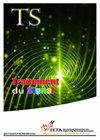基于迁移学习的人脸和步态识别集成:一种多尺度生物特征识别方法
IF 1
4区 计算机科学
Q4 COMPUTER SCIENCE, ARTIFICIAL INTELLIGENCE
引用次数: 0
摘要
本文章由计算机程序翻译,如有差异,请以英文原文为准。
Integration of Face and Gait Recognition via Transfer Learning: A Multiscale Biometric Identification Approach
The ubiquity of biometric identification systems and their applications is evident in today's world. Among various biometric features, face and gait are readily obtainable and thus hold significant value. Advances in computational vision and deep learning have paved the way for the integration of these biometric features at multiple scales. This study introduces a system for biometric recognition that synergises face and gait recognition through the lens of transfer learning. Feature extraction was accomplished using Inception_v3 and DenseNet201 algorithms, while classification was performed employing machine learning algorithms such as K-Nearest Neighbours (KNN) and Support Vector Classification (SVC). A unique dataset was constructed for this research, consisting of face and gait information extracted from video clips. The findings underscore the efficacy of integrating face and gait recognition, primarily through feature and score fusion, resulting in enhanced recognition accuracy. Specifically, the Inception_v3 algorithm was found to excel in feature extraction, and SVC was superior for classification purposes. The system achieved an accuracy of 98% when feature-level fusion was performed, and 97% accuracy was observed with score fusion using Decision Trees. The results highlight the potential of transfer learning in advancing multiscale biometric recognition systems.
求助全文
通过发布文献求助,成功后即可免费获取论文全文。
去求助
来源期刊

Traitement Du Signal
工程技术-工程:电子与电气
自引率
21.10%
发文量
162
审稿时长
>12 weeks
期刊介绍:
The TS provides rapid dissemination of original research in the field of signal processing, imaging and visioning. Since its founding in 1984, the journal has published articles that present original research results of a fundamental, methodological or applied nature. The editorial board welcomes articles on the latest and most promising results of academic research, including both theoretical results and case studies.
The TS welcomes original research papers, technical notes and review articles on various disciplines, including but not limited to:
Signal processing
Imaging
Visioning
Control
Filtering
Compression
Data transmission
Noise reduction
Deconvolution
Prediction
Identification
Classification.
 求助内容:
求助内容: 应助结果提醒方式:
应助结果提醒方式:


